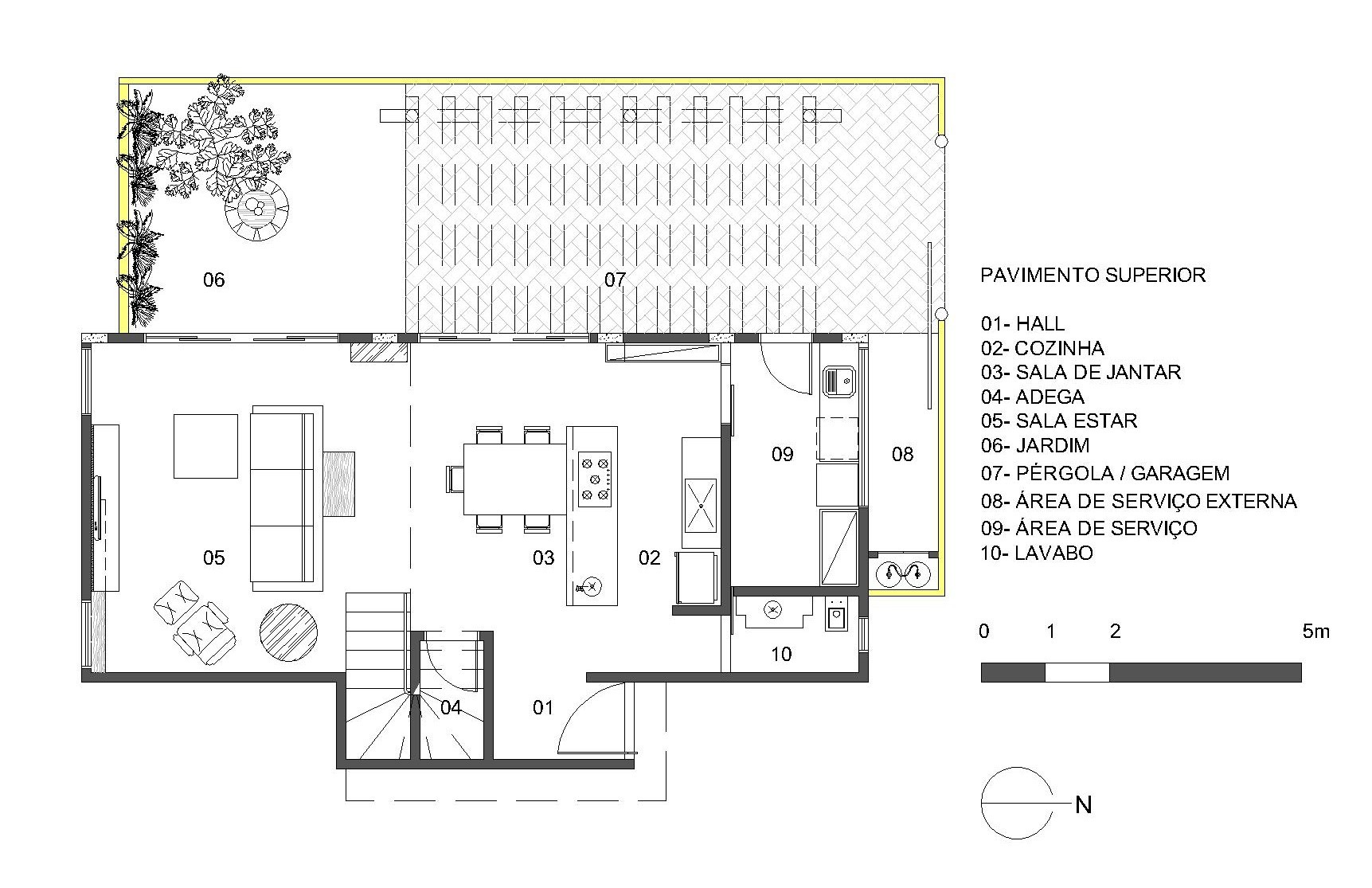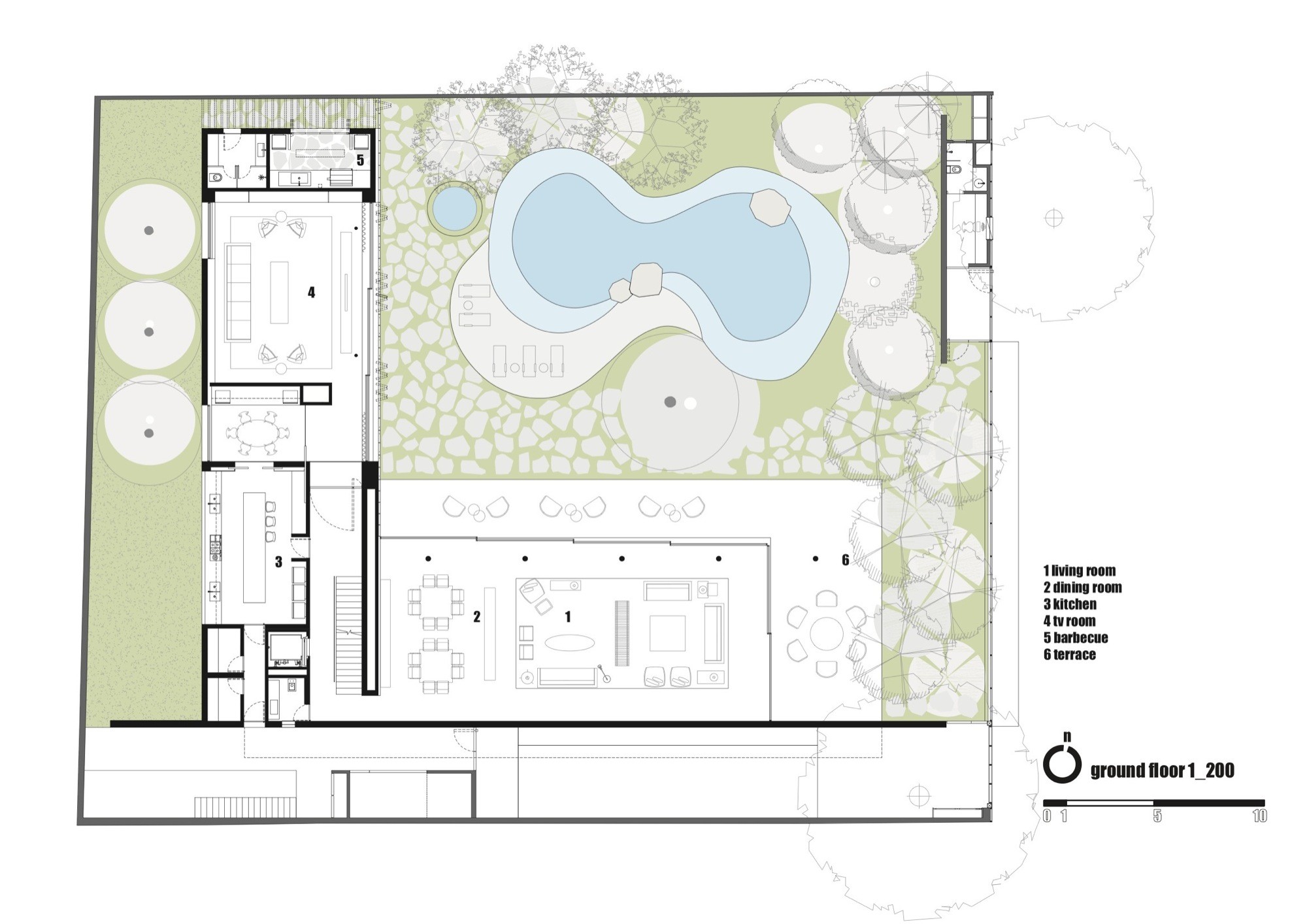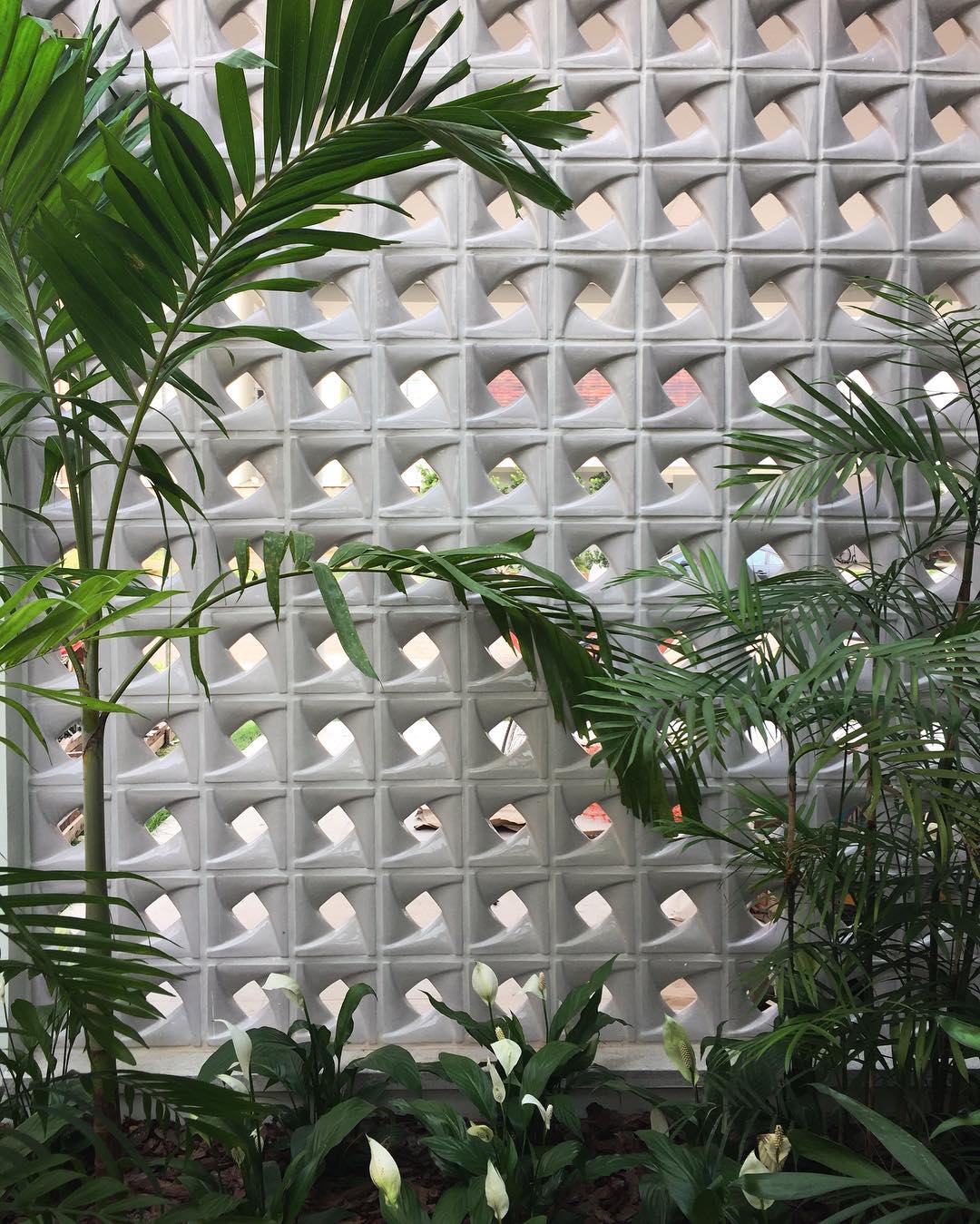
Casa de 3 quartos designer simples (Planta Baixa no vídeo), parede de
Cobogós Chamado também de elemento vazado, é feito de concreto ou cerâmica e limita os ambientes sem impedir a entrada de ar. Foi inventado por três engenheiros-arquitetos brasileiros, na primeira metade do século XX, que batizaram com a união de suas iniciais: Coimbra, Boeckmann Góis. Elementos arquitetônicos

Galeria de Apartamento cobogó / Lelalo arquitetura e design 25
Concreto Projetos Projetos Construídos Clássicos da Arquitetura brasil rio-de-janeiro arquitetura-moderna-brasileira classicos cobogo parque-guinle lucio-costa Cobogó Outro Publicado em 17 de Dezembro de 2011

Galería de Ap Cobogó / Alan Chu 41
Completed in 2018 in São Carlos, Brazil. Images by Pedro Kok. Located on an urban lot within a consolidated neighborhood in the central region of the city of São Carlos, in the interior of the.

Galeria de Ap Cobogó / Alan Chu 28 Building design, Architecture
An example of this is the use and reinterpretation, in many contemporary works, of a typical element of the Brazilian building tradition such as the cobogó, introduced from the 1920s onwards and widely disseminated by Modernism. The cobogó - an acronym of the first syllables of the surnames of its creators, the engineers Coimbra, Boeckmann.

Galería de Ap Cobogó / Alan Chu 29
Cais do Sertão Museum / Brasil Arquitetura | ArchDaily Completed in 2018 in Recife, Brazil. Images by Nelson Kon. For the construction of the museum, the Government of the State of Pernambuco.

Ap Cobogó / Alan Chu ArchDaily Brasil
O cobogó é uma forma prática de integrar os ambientes da sua casa, gerando ventilação e iluminação natural 2 min de leitura Por Isadora Moraes 29 Mar 2021 - 07h13 Atualizado em 29 Mar 2021 - 07h13 Cobogó Breeze Brick (Foto: Divulgação) Para aumentar a ventilação e a iluminação natural, muitos arquitetos usam o cobogó.

Galería de Casa Cobogó / Ney Lima 14
Save this picture! In the Historic Center of Olinda, a Brazilian municipality in the state of Pernambuco, architecture borrows shapes and colors from nature; cobogós perforations on the balconies.

Gallery of Cobogó House / Studiomk27 Marcio Kogan 41
Imagem 27 de 41 da galeria de Ap Cobogó / Alan Chu. Planta Baixa Ap Cobogó / Alan Chu . Planta Baixa. 27 / 41. Guardar imagem. Ampliar imagem | Tamanho original. Desenhos Interiores De Apartamentos. Compartilhar Compartilhar esta imagem. Facebook. Twitter. Mail. Pinterest. Ou. Copiar URL. Guardar imagem.

Galeria de Casa Cobogó / Allouchie Arquitetos 20
The cobogó appeared in the 1920s, in Recife, and its name come from the combination of the first syllable of the last names of their creators. They are an inheritance of Arab culture, based on.

Galería de Casa Cobogó / Ney Lima 15
O cobogó é um tipo de tijolo vazado de origem pernambucana que marcou presença na arquitetura modernista brasileira. E agora, voltou com força total e repaginado na decoração de interiores. A função desse modelo de acabamento formar paredes ou painéis que possibilitam maior ventilação e luz natural em determinado espaço, seja dentro de um apartamento ou de uma casa, além da sua.

Galería de Ap Cobogó / Alan Chu 31
En este apunte se enseñarán las representaciones de los principales objetos en planos de Arquitectura, en base principalmente a la NCh745 para el caso de. M. Marta Mellado. Habitacional. Residencial. Conjunto Habitacionais. Centro Comunitário. Habitação De Interesse Social. Habitação Social.

Galeria de Ap Cobogó / Alan Chu 29
Cobogó bricks were initially patented in 1929 in Brazil by 3 engineers, Amadeu Oliveira Coimbra, Ernest August Boeckmann and Antônio de Góis. This interesting new invention was a hollow structural element similar to a " brick material" that allowed light and air to come through. The trio of engineers named these bricks, "Cobogó", for no other reason than to incorporate the first.

representação de cobogó em planta baixa Pesquisa Google Janelas
Project sent to the 2012 International VELUX Award Competition Life is based on natural cycles. The trajectory of sunlight on the inhabited surface gives rhyt…

Galeria de Ap Cobogó / Alan Chu 33
Perforated black blocks screen Cobogós House in Brazil by MF+ Arquitetos. Black cobogó bricks, timber and stone cover the three volumes that make up this house in Franca, São Paulo designed.

Galería de Ap Cobogó / Alan Chu 36
The Brazilian architect Delfim Amorim used the Cobogó as a screen-wall in the 1959 redesign of the Luciano Costa house, an eclectic building from the 1910s located in Recife. A tiled concrete.

Cobogó 50 ambientes para você se apaixonar por este elemento decorativo
Verificação de segurança. Seu IP fez diversas tentativas de acessos suspeitos a sites hospedados conosco. Para liberar o acesso, responda ao desafio abaixo. [trocar imagem] Digite a palavra na imagem ao lado no campo abaixo.